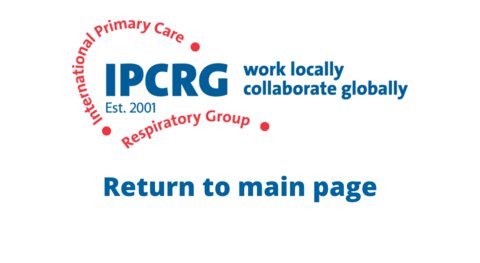Can we safely use nebulisers during the COVID-19 pandemic in the primary care setting, and if so how?
What the research says:
Pressurised metered dose inhalers (pMDIs) in combination with a spacer or a dry powder inhaler (DPI) appear to be at least as effective as a nebuliser for the delivery of respiratory medications even during symptomatic exacerbations (van Geffen et al 2016). The COVID-19 virus is spread primarily via respiratory droplets; respiratory aerosols have also been implicated in viral transmission in medical settings, particularly from aerosol generating procedures. Nebulisation is not generally regarded as a respiratory aerosol generating procedure. The aerosol is generated from the fluid in the nebulisation chamber. Therefore, it does not carry the respiratory fluid droplets that would carry the SARS-CoV-2 virus of an infected patient (Cazzola et al 2021; Hartmann-Boyce et al 2020; NICE 2020; PHE 2021). However, concerns persist with regard to ‘fugitive aerosols’ that might be generated as patients exhale and that may escape from the nebulisation mask (Swarnakar et al 2021).
Several sources recommend against the use of nebulisers for the delivery of medication for acute symptom exacerbation (Canadian Thoracic Society 2020; GINA 2020; Hartmann-Boyce et al 2020). If nebulisation is considered necessary for the delivery of asthma medication, the Royal College of Emergency Medicine recommends using minimal flow rate oxygen required to drive the nebuliser (RCEM 2020).
For patients with known current COVID-19 infection Australian guidelines recommend against use of a nebuliser for delivery of steroids (National COVID-19 Clinical Evidence Taskforce 2020).
What this means for your clinical practice:
- It is recommended to use a pMDI in combination with a spacer to deliver bronchodilators for patients with asthma or COPD, whenever possible
- Unless it is considered necessary, avoid using a nebuliser. If you do use a nebuliser:
- Use appropriate personal protective equipment in accordance with national guidance
- Maintain a physical distance of at least 2-metre distance when not conducting a physical examination
- Pay rigorous attention to ventilation and COVID-appropriate cleaning of clinical areas between patient consultations
- Clean nebulisers according to manufacturer’s instructions after each use
- Use a disposable mask, mouthpiece, tubing, and chamber and dispose of all single-use items such as clinical waste
With grateful thanks to Dr Dhiraj Agarwal (KEM Hospital Research Centre Pune, Pune, India) for and on behalf of the IPCRG practice driven answers review group.
Resource information
- COVID-19
- Disease management
- Treatment - non-drug
